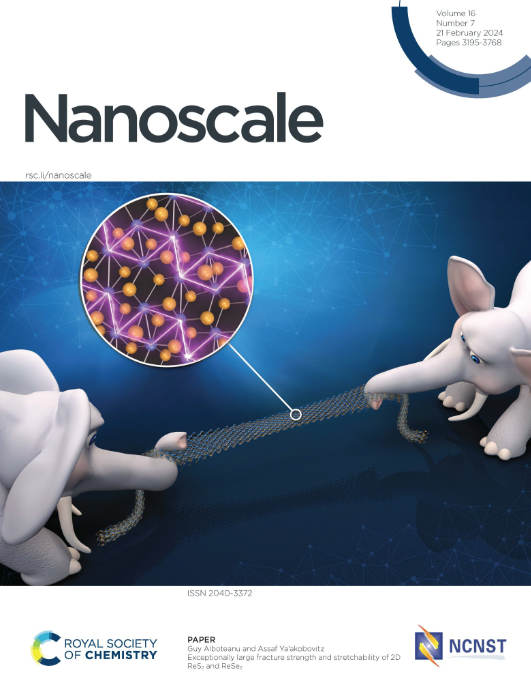Multi-crosslinked strong, tough and anti-freezing organohydrogels for flexible sensors
IF 5.8
3区 材料科学
Q1 CHEMISTRY, MULTIDISCIPLINARY
引用次数: 0
Abstract
Hydrogels are promising sensing materials for various smart and biocompatible applications; nevertheless, it is still challenging to enhance their mechanical property and stability in wide temperature windows and under extreme conditions (such as dry and swelling state). Herein, we report a strong, tough, anti-freezing and anti-dehydration organohydrogel achieved by designing a dual-network structure with multi-crosslinking interactions. The interpenetrated ploy (vinyl alcohol) (PVA) chains and poly [N, N dimethyl (methylacryylethyl) ammonium propane sulfonate] (PDMAPS)/polyacrylamide (PAM) block copolymer chains provide abundant hydrogen bonds and cation-anion dipole interactions; meantime, dimethyl sulfoxide and CaCl2 are added to further improve the mechanical properties, and to facilitate the conductivity and anti-freezing property. By systematically optimizing the multi-intercations among these components, the organohydrogel reaches high tensile strength (2.7 MPa), high stretchability (630%), considerable ionic conductivity (2.4 mS cm-1 at RT). More importantly, it achieves remarkable stability in a wide temperature range of -40~80℃. Then, the organohydrogel sensors in resistive- and triboelectric nanogenerator (TENG)-mode are demonstrated for strain/temperature sensing, and non-contact distance/materials sensing, respectively, suggesting their great potentials in flexible electronics in the future.用于柔性传感器的多交联强韧抗冻有机水凝胶
水凝胶是一种很有前景的传感材料,可用于各种智能和生物兼容的应用领域;然而,如何提高水凝胶在宽温度窗口和极端条件(如干燥和溶胀状态)下的机械性能和稳定性仍是一项挑战。在此,我们报告了通过设计具有多重交联相互作用的双网络结构而获得的一种强韧、坚固、抗冻和抗脱水的有机水凝胶。相互渗透的聚乙烯醇(PVA)链和聚[N, N 二甲基(甲基丙烯酰乙基)丙烷磺酸铵](PDMAPS)/聚丙烯酰胺(PAM)嵌段共聚物链提供了丰富的氢键和阳离子-阴离子偶极相互作用;同时,二甲基亚砜和 CaCl2 的加入进一步提高了其力学性能,并促进了其导电性和抗冻性。通过系统优化这些成分之间的多重交联,有机水凝胶达到了很高的拉伸强度(2.7 兆帕)、高拉伸性(630%)和相当高的离子导电性(2.4 mS cm-1 at RT)。更重要的是,它在-40~80℃的宽温度范围内具有显著的稳定性。随后,还展示了电阻模式和三电纳米发生器(TENG)模式的有机水凝胶传感器,分别用于应变/温度传感和非接触式距离/材料传感,表明其在未来柔性电子学中具有巨大潜力。
本文章由计算机程序翻译,如有差异,请以英文原文为准。
求助全文
约1分钟内获得全文
求助全文
来源期刊

Nanoscale
CHEMISTRY, MULTIDISCIPLINARY-NANOSCIENCE & NANOTECHNOLOGY
CiteScore
12.10
自引率
3.00%
发文量
1628
审稿时长
1.6 months
期刊介绍:
Nanoscale is a high-impact international journal, publishing high-quality research across nanoscience and nanotechnology. Nanoscale publishes a full mix of research articles on experimental and theoretical work, including reviews, communications, and full papers.Highly interdisciplinary, this journal appeals to scientists, researchers and professionals interested in nanoscience and nanotechnology, quantum materials and quantum technology, including the areas of physics, chemistry, biology, medicine, materials, energy/environment, information technology, detection science, healthcare and drug discovery, and electronics.
 求助内容:
求助内容: 应助结果提醒方式:
应助结果提醒方式:


